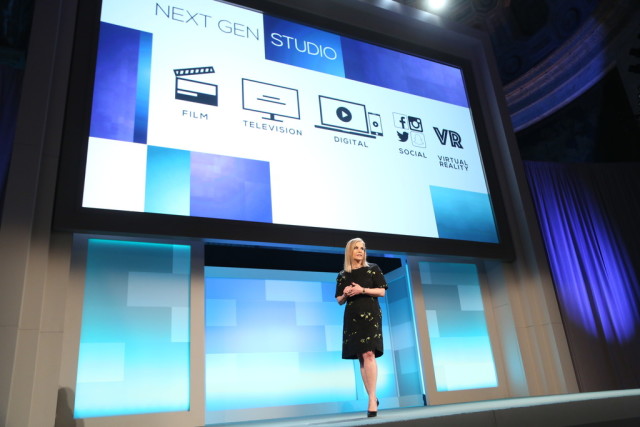Mike Vorhaus of Magid Associates spoke with Neil Young, CEO of N3twork and veteran of Electronic Arts, ngmoco, and DeNA, about the state of the mobile game market and where it’s headed. Young’s perspective is an interesting one that draws on his experience from all areas of the games business.
Young left Electronic Arts and started ngmoco (which stood for ‘next generation mobile company’), he did it because it just seemed “really f*king obvious” to him, as he told Vorhaus. “The original vision for ngmoco was really three ideas,” Young explained. “We wanted to be like first-party for mobile devices – we didn’t really feel that Apple, Google and others would be making games themselves. We wanted to build a network that would connect our games together, and we wanted to make that network available to third parties. We essentially accomplished that, though we never intended to be a free-to-play company.”
Young’s recollection of the early days of modern mobile games is important as a reminder that initially mobile games were seen as premium products. Those days seem long gone from mobile as free-to-play has taken over as by far the leading monetization model. “At some point the supply of applications outstripped the demand, and that forced us to think very differently to think about how to build a company,” Young said. “We shipped our first games in October of 2008, and Rolando was $9.99 and it was the #2 grossing game in the App Store.”
“Some people say that premium games have been, as they say on Wall Street, oversold, and they’ll actually come back,” Vorhaus said. “Do you have an opinion on that?” “I don’t think it’s going to come back on mobile,” Young replied. “I think mobile is a very unique platform and I don’t think people give mobile due credit. People are constantly trying to relate console experiences to mobile, and I think that denigrates both console quality and mobile quality. The types of games you build for mobile are just fundamentally different from a human experience than those types of things you build for console or PC. Because of that, because of the ecosystem, I don’t think true premium gaming is going to be a big business on mobile.”
True enough, but it’s worth noting that Minecraft‘s mobile version has sold over 20 million units at $6.99, and it continues to sell well every month. Yes, Minecraft is unique in many ways, but that doesn’t mean you should just ignore what Minecraft does. Some bold game company should take it as a challenge, both for game design and for marketing. That may be a viable market for a particular developer or two, but as Young notes it’s unlikely to be a major factor again in the mobile business.
There is one brand that comes to mind as a very good possibility for selling premium games on mobile—Nintendo. If there’s any game that would get people to pay a good price for a mobile game, it would be something like a good Mario title or a Zelda title.
Vorhaus inquired as to what Young is doing with his new company N3twork. The company was initially constrained from doing games because of restrictions on its founders, but after those were lifted “we entered the game space,” Young said. “As we looked at the mobile and video game market, it just continued to surprise us. A lot of those lessons and learnings about how to deliver high LTV (life-time value) experiences had yet to be put into practice. That is what we are dedicated towards today. We are building products and have a unique, proprietary technology platform that our products sit on top of, that are all designed to be high LTV games. The business rationale of the high LTV game is that the life-time value is higher than the cost of acquisition within some reasonable payback window. Instead of just relying on scale in order to be able to build a business, you can rely on yield and seek hits so that when you have an outsize hit you have a very successful business.”
“The mobile business today,” Young continued, “is kind of like baseball if you could only score off of home runs. What we’re trying to build is a company that’s capable of playing complete baseball.” Are there companies that Young would point to as good examples of how to generate more than one hit? “I think there’s two,” Young said. “I think there’s Supercell, which has a spectacular production process and discipline, and builds amazing pieces of software, and there’s Machine Zone, which has the same game framework and prosecutes high- LTV, ROI-positive user acquisition.”
Vorhaus turned the topic to user acquisition, noting that not long ago $2 was the norm and now $30 is not unusual for the top guys to spend on acquiring a single user. “Will your platform and your approach to discovery allow you to avoid that high expense, traditional way of user acquisition?”
“It’s difficult to avoid,” admitted Young. “The way to solve that problem is to build games that have a higher lifetime value than the cost of acquisition, and that’s really the number one focus for our company. Having said that, most people are now prosecuting in the mobile game space the same way they were in 2012. And there are some pretty new channels that you can access. Part of our platform that we use for our own products take advantage of those channels. When you have people with large-scale audiences, and a high degree of affinity with those audiences, there’s a tremendous opportunity there.”
Vorhaus asked whether the mobile market is changing, and how it might change in Young’s view. “I think it’s changing, and it’s going to get to the place that’s quite similar to what we see in Japan these days,” Young said in response. “In Japan, 44 out of the top 50 games are advertised on television. There are some unique factors in Japan for sure, but if you take those aside, that’s basically enabled by the fact that most of those games are what we would think of as high-LTV games. That can be driven to the biggest audience possible by deploying capital, and I think that’s going to happen here in the West.”
“I think what that means is we’re going to see the mobile games business here in the West making five to eight times its current size on a dollar basis,” Young continued. “There’s not going to be more people playing games on smartphones, that ship has sailed. What is going to change radically in the West is the average revenue per users, and that’s going to require us as game-makers to figure out how you take engagement and monetization systems and put them into pieces of software that can be as broadly compelling as possible so that we can drive big businesses based on software that people love.”
Image courtesy VentureBeat



